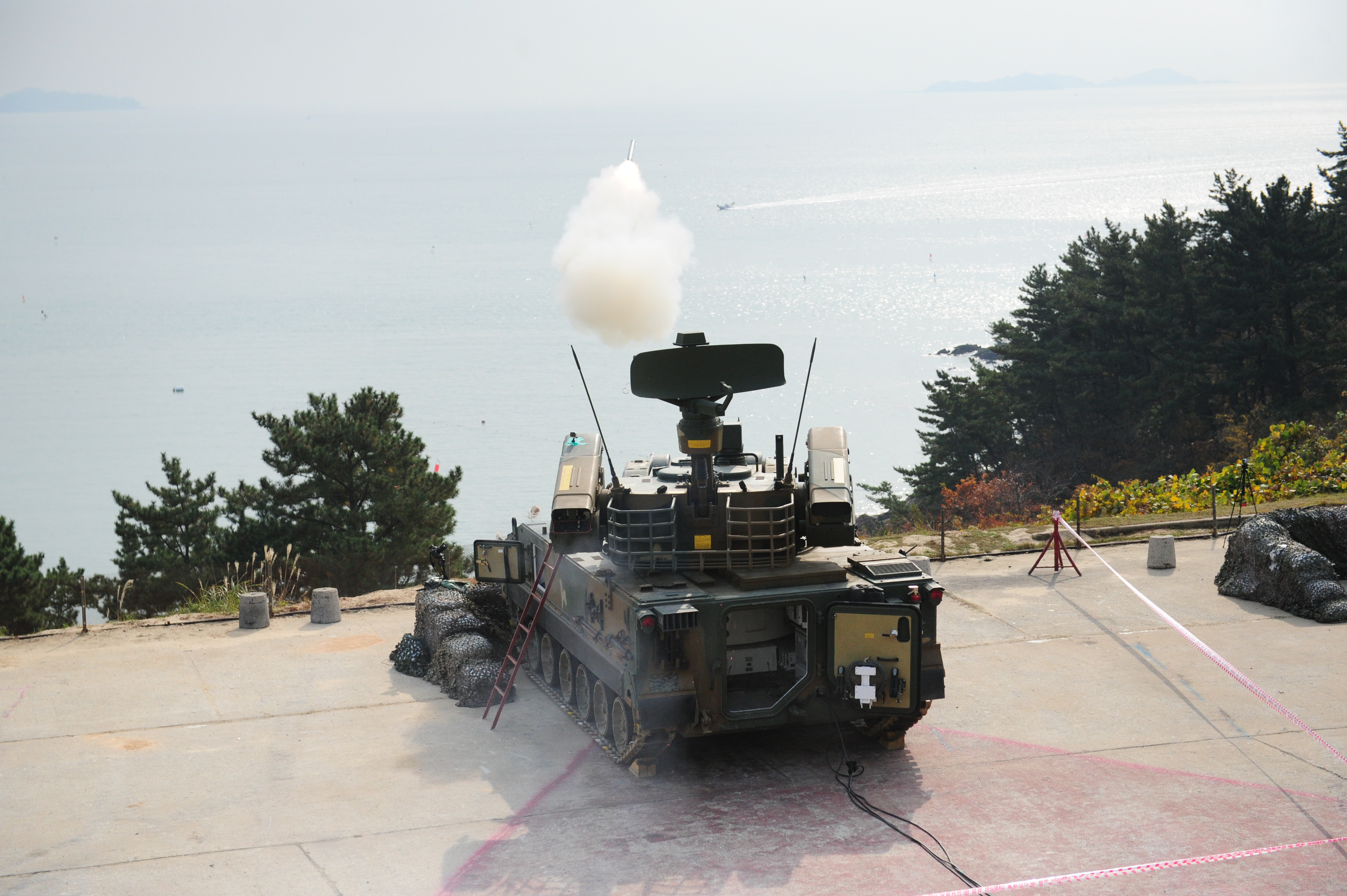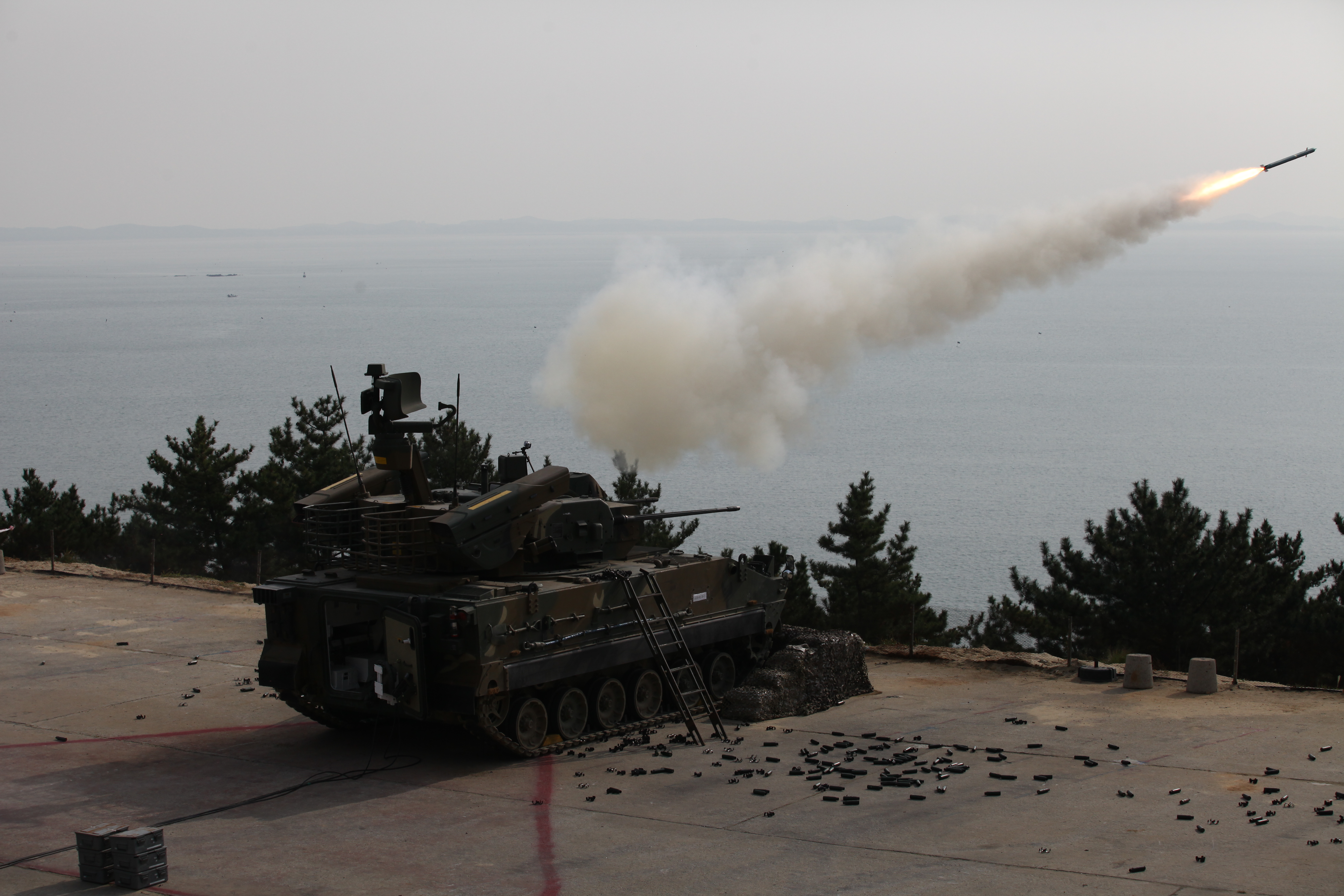Hybrid BiHo: A Strategic Solution to Secure India’s Skies

By Hanwha Aerospace (By Invitation)
As India advances its defense capabilities, Hanwha Aerospace, South Korea’s leading defense company, is positioning its Hybrid BiHo system as a core element in the modernization of India’s air defense. Designed for adaptability, the Hybrid BiHo merges rapid-fire anti-aircraft guns with guided missile systems, creating a self-propelled, mobile platform capable of tackling a range of low-altitude threats. Originally developed for the Republic of Korea Armed Forces, the BiHo has demonstrated both adaptability and technical prowess — qualities that make it a compelling fit for India’s distinct defense landscape.
This journey began in 2013, when India issued a Request for Proposal (RFP) to replace its aging air defense systems, sparking a competitive selection process that drew significant industry interest. Among the field of competitors, Hanwha’s Hybrid BiHo emerged as a key contender. This was followed by trials in 2017, where three systems advanced to final consideration. Hanwha’s BiHo stood out, blending advanced radar technology with a twin 30mm cannon system and precision-guided missile pods — a layered defense architecture designed to respond swiftly to evolving aerial threats.
Navigating the Path to Indian Deployment
In the initial stages of India’s selection process, the Hybrid BiHo excelled in trials and, by 2018, emerged as the Indian Army’s preferred choice. This win positioned Hanwha to fulfill a critical role in India’s defense plan. As part of its preparation, Hanwha Aerospace undertook steps to align with India’s “Make in India” mandate, organizing a network of local partners and manufacturing infrastructure. The company partnered with Larsen & Toubro (L&T) to facilitate domestic production of the BiHo, leveraging L&T’s expansive facility in Hazira, Gujarat, to create an assembly line that would support local manufacturing, assembly, and future sustainment of the system. The project was expected to generate over 3,000 direct jobs and 13,000 indirect roles, laying the foundation for a broad defense ecosystem in Gujarat and beyond.
This emphasis on local industry engagement positioned Hanwha not just as a vendor, but as a strategic partner committed to India’s self-reliance goals. By sourcing components from Indian small and medium enterprises (SMEs) and fostering technology transfer, Hanwha’s approach projected substantial contributions to India’s industrial base, labor force skills, and economic development.

A Strategic Pause, with Opportunity on the Horizon
Though Hanwha Aerospace’s Hybrid BiHo had successfully navigated India’s selection process, the program entered a pause as defense priorities adjusted to meet broader demands. For Hanwha, this period has required patience and a longer-term view, with the company maintaining readiness to fulfill India’s requirements. Industry observers note that Hanwha’s investment — which included outfitting trial equipment and mobilizing resources for rigorous No-Cost-No-Commitment (NCNC) trials — demonstrates its commitment to the Indian defense market.
As the Indian Army continues to manage its legacy air defense systems, the need for modernized capabilities has grown more pressing. Analysts suggest that if the contract had been formalized by 2019, the Hybrid BiHo could have been partially deployed by 2021, providing India with a modernized air defense framework. The reliance on older systems, however, remains a tactical consideration, as India’s current fleet faces potential gaps in protecting against low-altitude, high-speed threats like drones and helicopters.
Renewed Prospects as a New RFI is Issued
In 2023, the Indian Army renewed its efforts, issuing a fresh Request for Information (RFI) for a self-propelled air defense gun and missile system, a development that reopens the doors for Hanwha Aerospace’s Hybrid BiHo. While this process offers new opportunity, industry insiders indicate that building a fully operational system from scratch can be a time-intensive endeavor. The Hybrid BiHo, by contrast, stands ready as a tested, deployable solution with local manufacturing infrastructure already established.
The Hybrid BiHo’s advantages go beyond readiness; its dual-layer defense capabilities are uniquely suited to address India’s evolving threat landscape. As the security environment grows more complex, the BiHo’s multi-layered approach — leveraging both direct-fire guns and longer-range missiles — allows it to neutralize a diverse array of low-altitude threats with precision and speed. Furthermore, Hanwha’s commitment to manufacturing within India dovetails with India’s defense priorities, creating a mutually beneficial structure for long-term capability development.
Cutting-Edge Technology and Local Impact
The Hybrid BiHo’s technology is at the forefront of air defense innovation. The TPS-830K X-band radar, which forms the system’s core, features advanced detection and tracking capabilities that allow it to target multiple aircraft simultaneously within a 17-kilometer range. Its dual 30mm guns, which can fire at a rate of 600 rounds per minute and engage targets up to 3,000 meters, are paired with missiles extending its reach to 7 kilometers. This layered approach offers India a high degree of tactical flexibility, allowing for effective engagement of a range of threats, from low-altitude UAVs to high-speed helicopters.
In addition, the BiHo’s electro-optical targeting system, which includes a forward-looking infrared (FLIR) component, a laser rangefinder, and a panoramic sight, ensures precision in varied operational environments. With capabilities tailored for India’s complex defense needs, the BiHo represents a direct solution to India’s requirement for an advanced, agile air defense system capable of responding to modern aerial threats.

Building a Resilient Defense Partnership
Beyond its immediate defense capabilities, Hanwha’s commitment to the Hybrid BiHo underscores a broader strategy to establish a resilient partnership with India. By aligning with India’s “Make in India” mandate and collaborating with local suppliers, Hanwha has positioned itself as a catalyst for economic and industrial development in the defense sector. Should the Hybrid BiHo be selected under the new RFI, Hanwha is prepared to execute the program swiftly and effectively, utilizing both its proven technology and its established local manufacturing base.
The potential for job creation and industry upskilling underpins the BiHo program’s value to India’s economy. In addition to offering a robust air defense solution, Hanwha’s planned partnerships with SMEs and skills training initiatives signify an enduring commitment to India’s defense manufacturing sector, with benefits extending far beyond the Hybrid BiHo program itself.
A Shared Vision for India’s Defense Modernization
For Hanwha Aerospace, the Hybrid BiHo offers an avenue to support India’s long-term defense aspirations. By providing a solution that aligns with India’s immediate needs and integrates seamlessly with the country’s industrial strategy, Hanwha is investing in a partnership built on shared goals. As the Indian Army reviews its options under the new RFI, Hanwha’s readiness to deliver, its local production capability, and the BiHo’s demonstrated effectiveness provide a strong foundation for collaboration.
Ultimately, the Hybrid BiHo would not only strengthen India’s air defense posture but also contribute to the growth of its defense industry. In an environment where security and economic resilience are tightly intertwined, the Hybrid BiHo stands as a viable and timely solution that could ensure the country’s skies remain secure for years to come.
All pics courtesy Hanwha Aerospace




